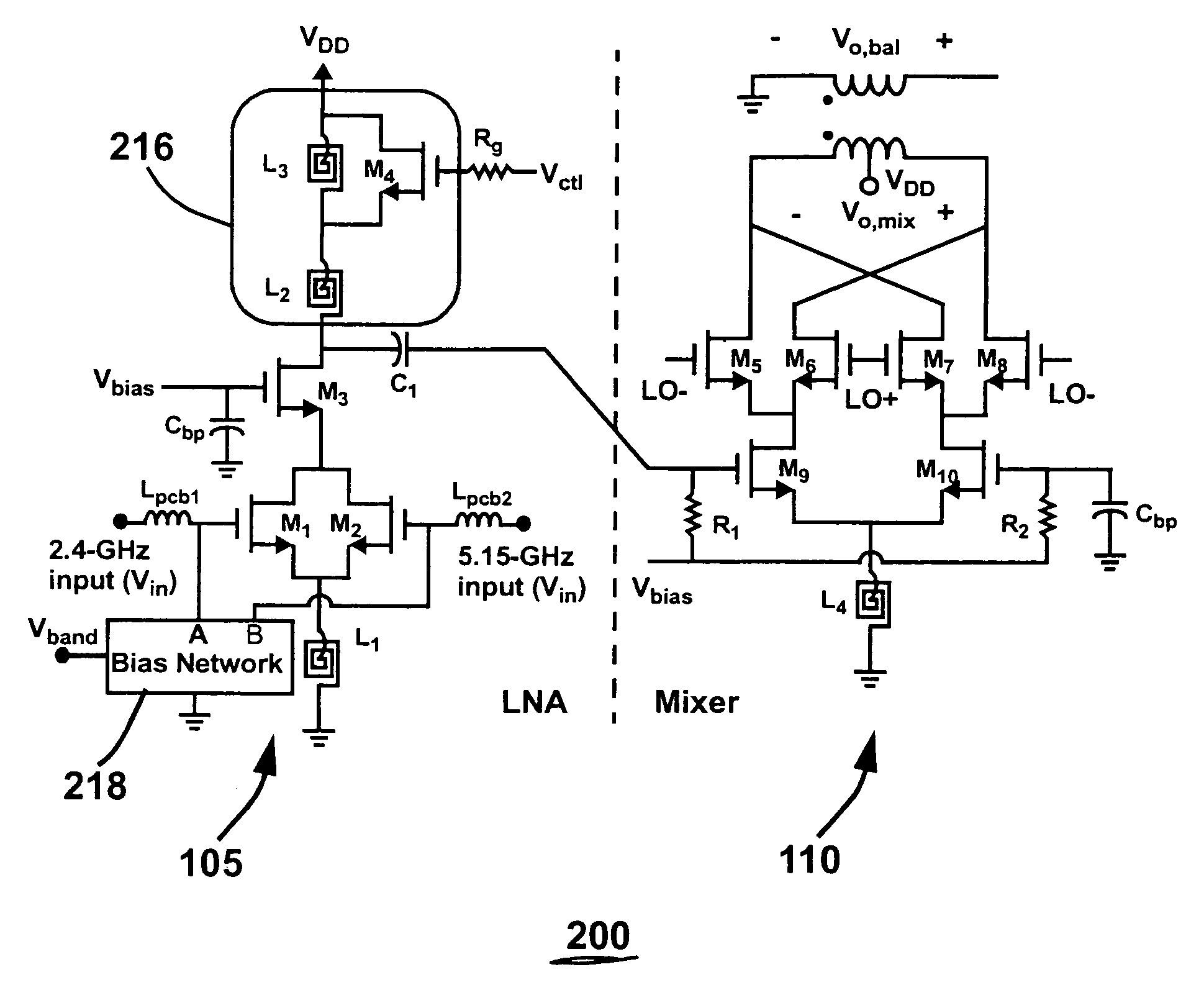Dual-band CMOS front-end with two gain modes
a cmos front-end and gain mode technology, applied in the direction of gated amplifiers, low-noise amplifiers, transportation and packaging, etc., can solve the problems of increasing the number of chip components, the overall die size, and the die cost is significantly increased, so as to improve the effect of reducing the footprint of the rf receiver
- Summary
- Abstract
- Description
- Claims
- Application Information
AI Technical Summary
Benefits of technology
Problems solved by technology
Method used
Image
Examples
examples
[0044]The present invention is further illustrated by the following specific examples, which should not be constructed as limiting the scope or content of the invention in any way.
[0045]The RF front-end circuit mounted on a four-layer FR4 board shown in FIG. 6 was tested. Chip-On-Board (COB) packaging technique was used for the testing, where a fabricated bare die according to the invention was directly bonded to the Printed-Circuit Board (PCB). The measured dual-band front-end circuit characteristics are summarized in Table 2 below.
[0046]
TABLE 2Frequency(GHz)2.45.15Gain Control ModeHighLowHighLowPower Gain (dB)26.59.51710Voltage Gain (dB)39.822.829.222.2DSB NF (dB)1.54.1SSB NF Calculated from2.66.2DSB NF (dB) [15]Input P1dB (dBm)−21−17−12−9.5P1dB (dBm)4.5−8.54−0.5Input IP3 (dBm)−12.7−6.6−4.1−1IP3 (dBm)13.82.912.99S11(dB)−8−8−10.8−10.8LO to IF Isolation (dB)>30>25VDD(V)1.81.81.81.8LNA Current (mA)339.19.1Mixer Current (mA)10.610.61414
[0047]A 2.4-GHz band power gain versus frequency ...
PUM
 Login to View More
Login to View More Abstract
Description
Claims
Application Information
 Login to View More
Login to View More - R&D
- Intellectual Property
- Life Sciences
- Materials
- Tech Scout
- Unparalleled Data Quality
- Higher Quality Content
- 60% Fewer Hallucinations
Browse by: Latest US Patents, China's latest patents, Technical Efficacy Thesaurus, Application Domain, Technology Topic, Popular Technical Reports.
© 2025 PatSnap. All rights reserved.Legal|Privacy policy|Modern Slavery Act Transparency Statement|Sitemap|About US| Contact US: help@patsnap.com



